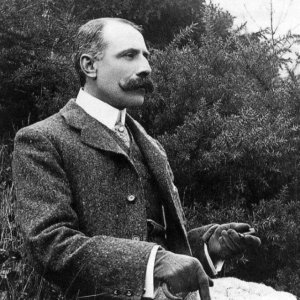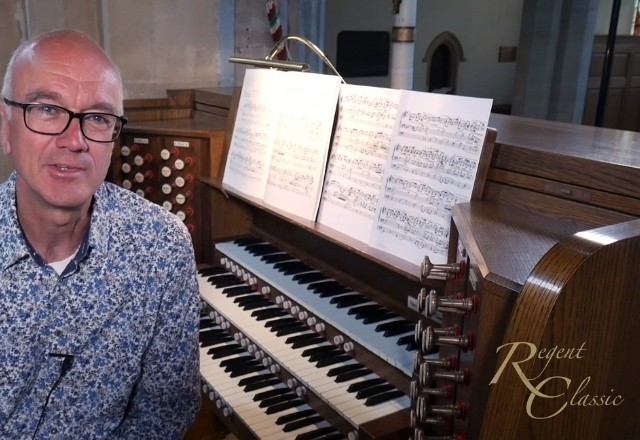Edward Elgar’s “Imperial March” was originally written to celebrate the Diamond Jubilee of Queen Victoria in 1897, scored for full orchestra.
It was first performed by massed bands at the Crystal Palace, and then at a royal garden party, a state concert, and at the Albert Hall by the Royal Artillery Band. At the time it was written it proved extremely popular, capturing the mood of civic pride and national confidence at the end of Victoria’s reign. It has retained its popular appeal as the years have gone by.
Many organ arrangements for Elgar’s Imperial March
Various organ arrangements have been made over the years, including this particularly successful one by George Martin (not the Beatles producer, but the organist of St Paul’s Cathedral from 1888). While one could hand-register the piece, it’s so much easier to manage with some pistons set up in advance, then you can handle some of the rapid changes in dynamics without having to grab fist-fulls (you might prefer fists full?) of stops.

It begins fairly quiet on the swell, with the oboe in the mix, but a reasonably woofy pedal is needed all the way through this piece to give it the sort of brass band substance that the style seems to imply. The big staccato interjections that follow on full swell are punctuated by fanfares in the left hand, here brought out on the choir Fanfare Trumpet.
After the statement of the main theme on the great, one has to knock down the dynamics rapidly with a piston and at least partly closing the boxes for the more subdued section that follows. Here the left hand has to bounce out the accompanying semiquavers precisely on the swell, while the choir and/or great coupled to swell can be used to bring out sections of the melody element. A certain amount of management of both expression pedals is needed to provide dynamic interest.
Moving out of this subdued section there’s a staged build up to the double bar that is ideally managed on pistons, both thumb and toe (depending on what’s convenient), plus some swell box opening. This does not last long however, and is knocked back rapidly again for a restatement of the opening sections that lead into a coda/finale, building dynamics towards a thrilling end on virtually full organ.
Musical Tutorial – Imperial March
In 2017 we featured Elgar’s Imperial March in our musical tutorial video series. Organist Jonathan Kingston played on a different Regent Classic custom built digital organ which has 69 stops, with all couplers managed from tabs above the Swell manual.
In the musical tutorial series Jonathan gives a short introduction to each piece, offering some background and tips about performance and registration. You can watch the tutorial for Imperial March below or the entire series on YouTube.
The Regent Classic Organ at St Mary’s and More Videos
This video was recorded in St Mary’s Witney where we installed a Regent Classic Organ in 2015. The bespoke organ at St Mary’s Witney has three manuals and an enlarged specification, with a separate choir division in the chancel.
Francis Rumsey, the organist at St Mary’s, and a consultant to Regent Classic, shares some of the recordings he’s made. These videos demonstrate the versatility and tone quality of the organ, as well as offering some interesting repertoire.
- Percy Whitlock: Chorale Prelude on ‘Werde Munter’
- Mendelssohn (arr. W.T. Best): Overture to ‘St. Paul’
- J.S. Bach: Sonata No. 5, Largo (BWV 529)
- Alfred Hollins: A Trumpet Minuet
I’m a retired academic, with a background in music and audio engineering. I’m currently a consultant for Viscount & Regent Classic Organs, as well as being a freelance organist, including a role as organist/choirmaster at St Mary’s, Witney. I sing bass with Oxford Pro Musica Singers and the Cathedral Singers of Christ Church, Oxford.


